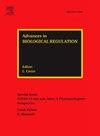DNA嵌入药物:在癌症治疗中的作用机制。
IF 2.4
Q1 Biochemistry, Genetics and Molecular Biology
引用次数: 0
摘要
自20世纪60年代以来,dna插入药物(如阿霉素)已用于癌症治疗。这些药物已经观察到多种机制。这些药物嵌入到染色质的无核小体区域,在调节基因表达和基因组组织中起着至关重要的作用。这些药物嵌入DNA会导致大量的事件,包括DNA损伤、染色质损伤(组蛋白脱落)、染色质组织侵蚀、核仁凝聚、RNA聚合酶I和/或RNA聚合酶II降解、转录阻滞、赖氨酸120泛素化的组蛋白H2B去泛素化、拓扑异构酶I和/或II抑制和/或捕获,以及与延长RNA聚合酶II相关的蛋白质破坏。这些事件可在加入这些药物后数小时内发生。随后,DNA结构发生变化(例如,Z DNA的形成),最终,细胞将通过凋亡死亡。本文综述了dna插入药物的作用机制,特别是两种蒽环类药物(阿霉素和阿克拉霉素)和一种杂芳香族化合物(BMH-21)。阿霉素和阿克拉比星在临床上用于治疗癌症,而BMH-21仍处于临床前开发阶段。这些蒽环类药物的血浆药代动力学报告将被制成表格,并根据这些信息评估阿霉素和阿克拉霉素观察到的作用机制的临床相关性。本文章由计算机程序翻译,如有差异,请以英文原文为准。
DNA intercalating drugs: Mechanisms of action in cancer treatment
DNA-intercalating drugs (e.g., doxorubicin) have been used in cancer treatment since the 1960s. Multiple mechanisms have been observed with these drugs. These drugs intercalate into nucleosome-free regions of chromatin, which play a crucial role in regulating gene expression and genome organization. DNA intercalation by these drugs results in a plethora of events, including DNA damage, chromatin damage (histone eviction), erosion of chromatin organization, nucleolar condensation, RNA polymerase I and/or RNA polymerase II degradation, transcription arrest, deubiquitination of histone H2B ubiquitinated at lysine 120, topoisomerase I and/or II inhibition and/or trapping, and disruption of proteins associated with the elongating RNA polymerase II. These events may occur within hours following the addition of these drugs. At later times, changes to the DNA structure (e.g., the formation of Z DNA) occur, and eventually, the cells will die via apoptosis. This review will examine the mechanisms of action of DNA-intercalating drugs, specifically two anthracyclines (doxorubicin and aclarubicin) and a heteroaromatic compound (BMH-21). Doxorubicin and aclarubicin are used clinically to treat cancer, while BMH-21 remains in preclinical development. Reports on plasma pharmacokinetics of these anthracyclines will be tabulated, and the clinical relevance of the observed mechanisms of action for doxorubicin and aclarubicin will be assessed based on this information.
求助全文
通过发布文献求助,成功后即可免费获取论文全文。
去求助
来源期刊

Advances in biological regulation
Biochemistry, Genetics and Molecular Biology-Molecular Medicine
CiteScore
8.90
自引率
0.00%
发文量
41
审稿时长
17 days
 求助内容:
求助内容: 应助结果提醒方式:
应助结果提醒方式:


